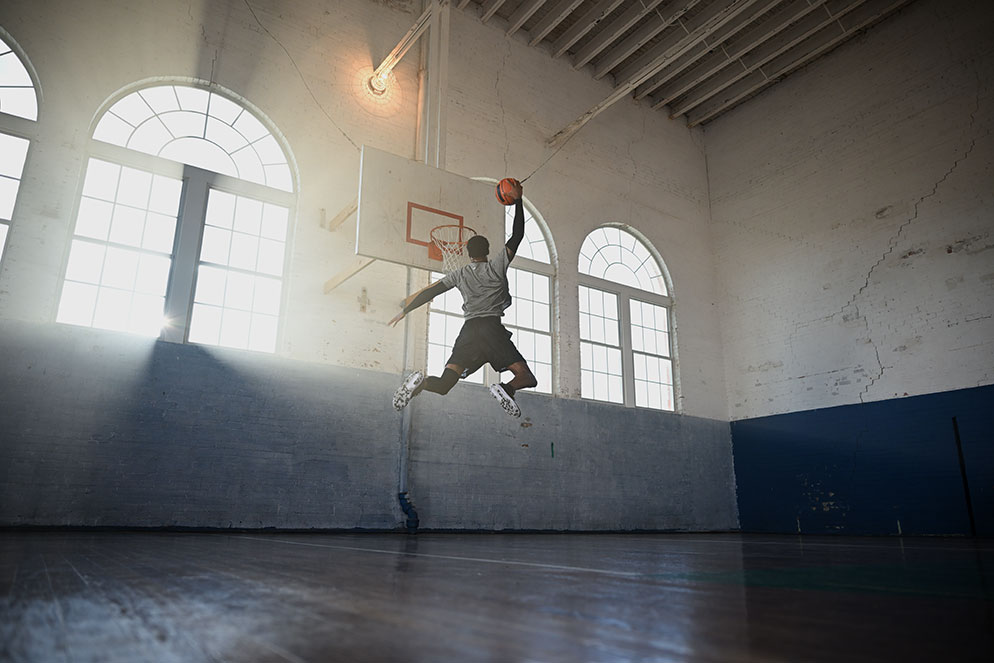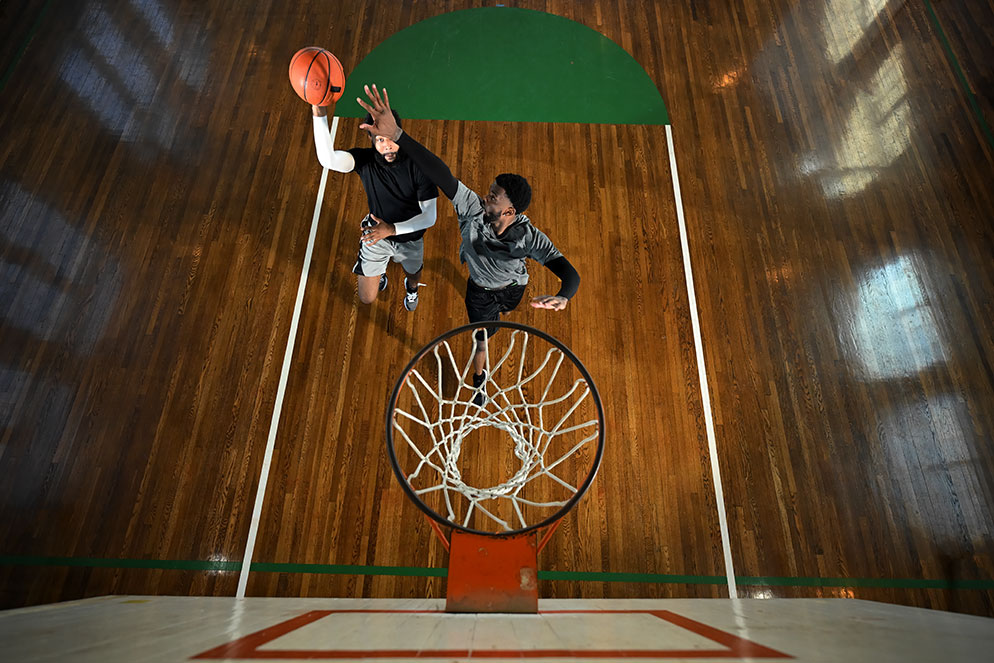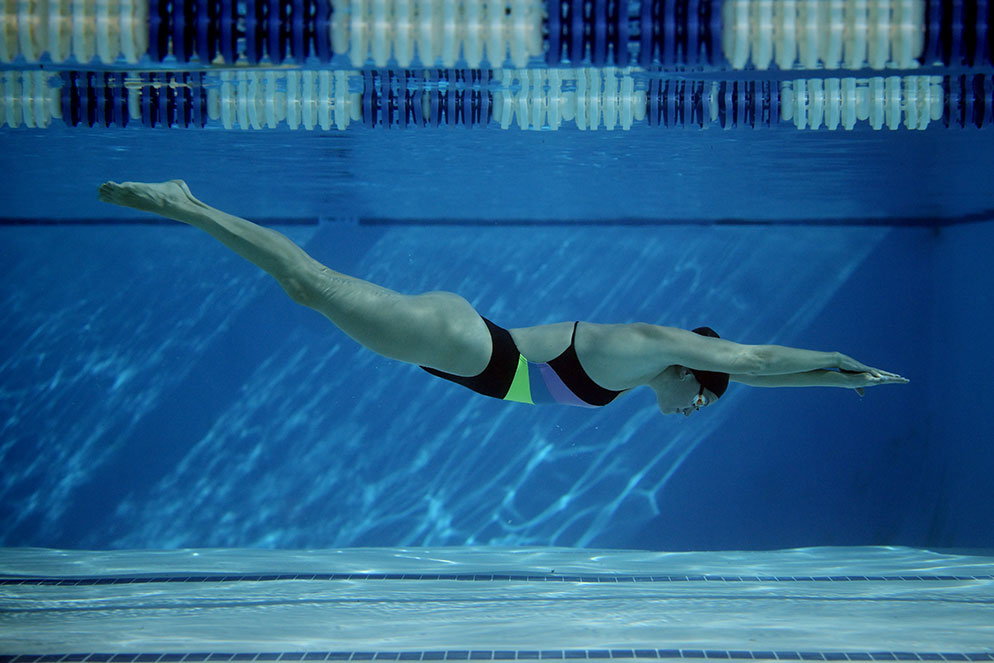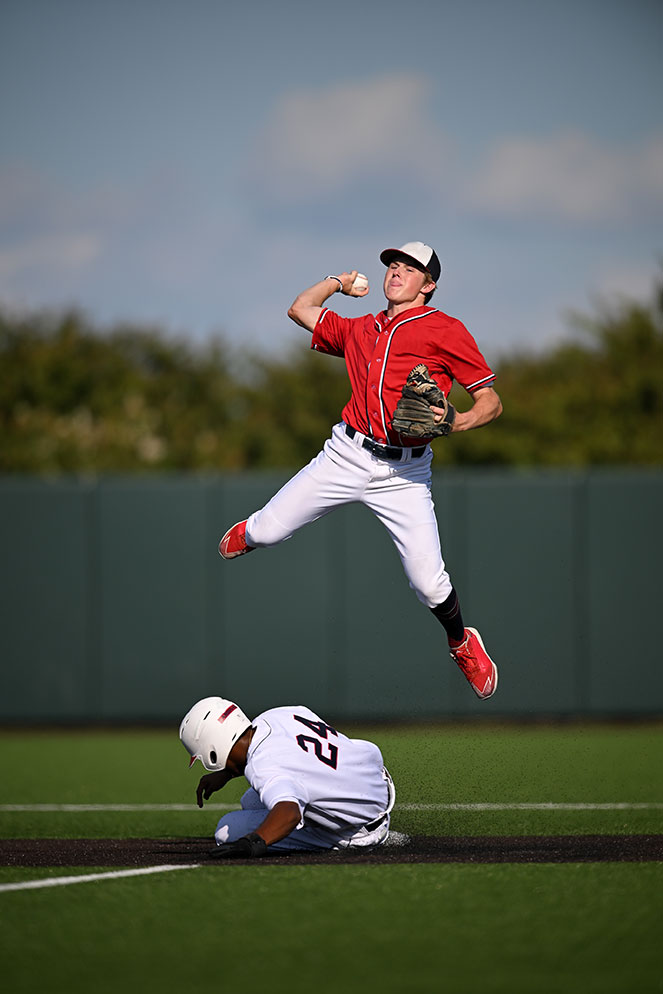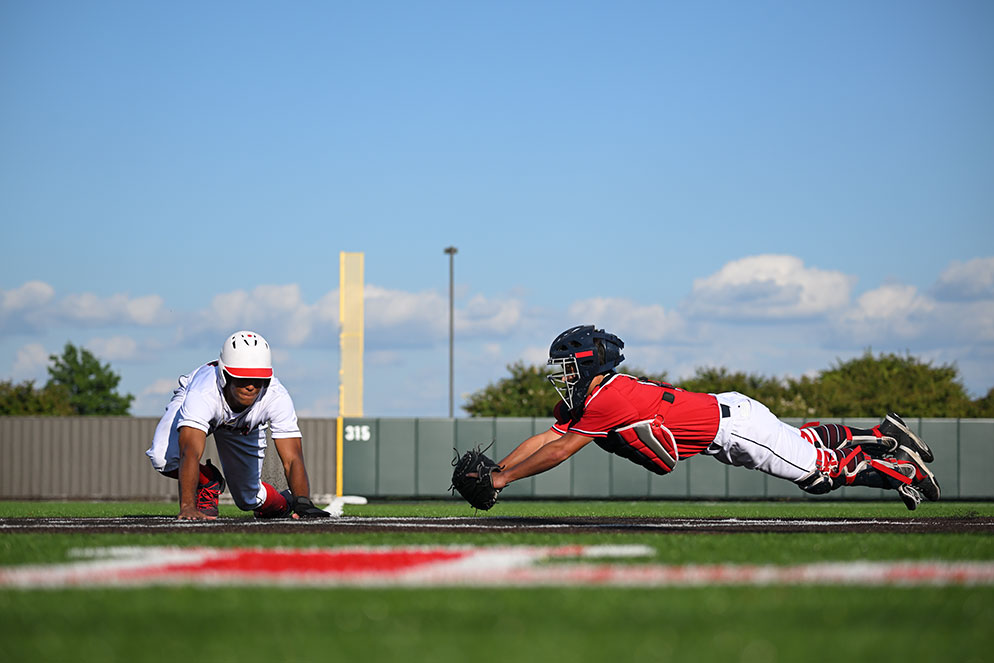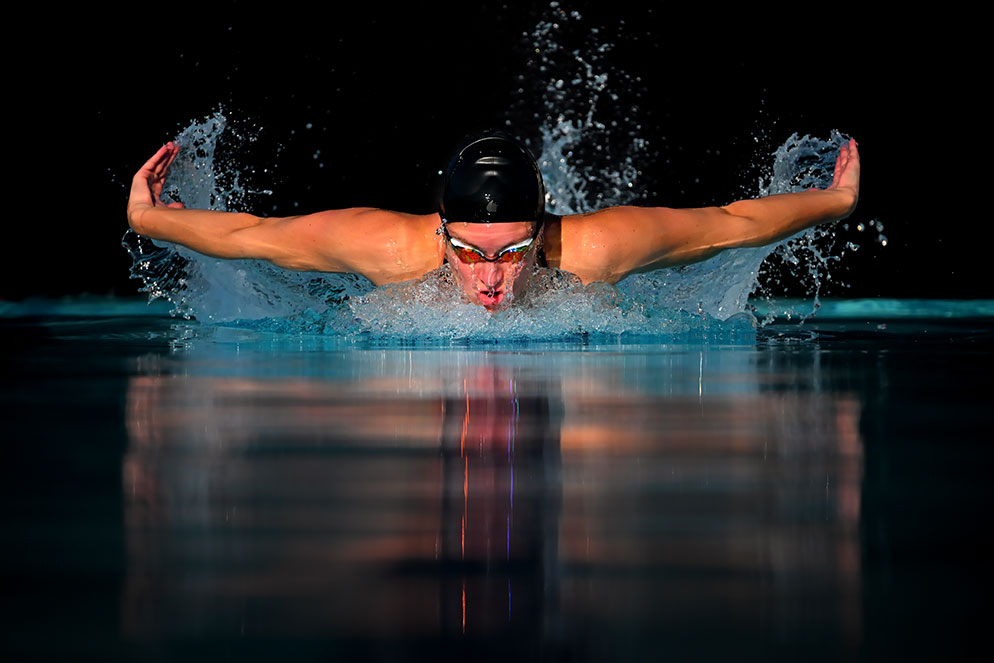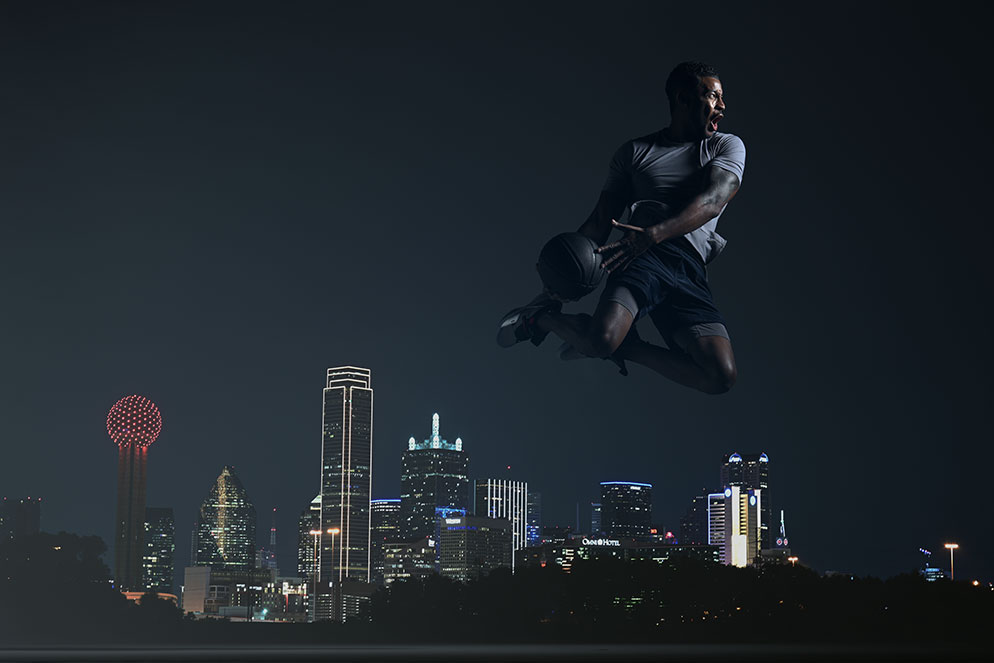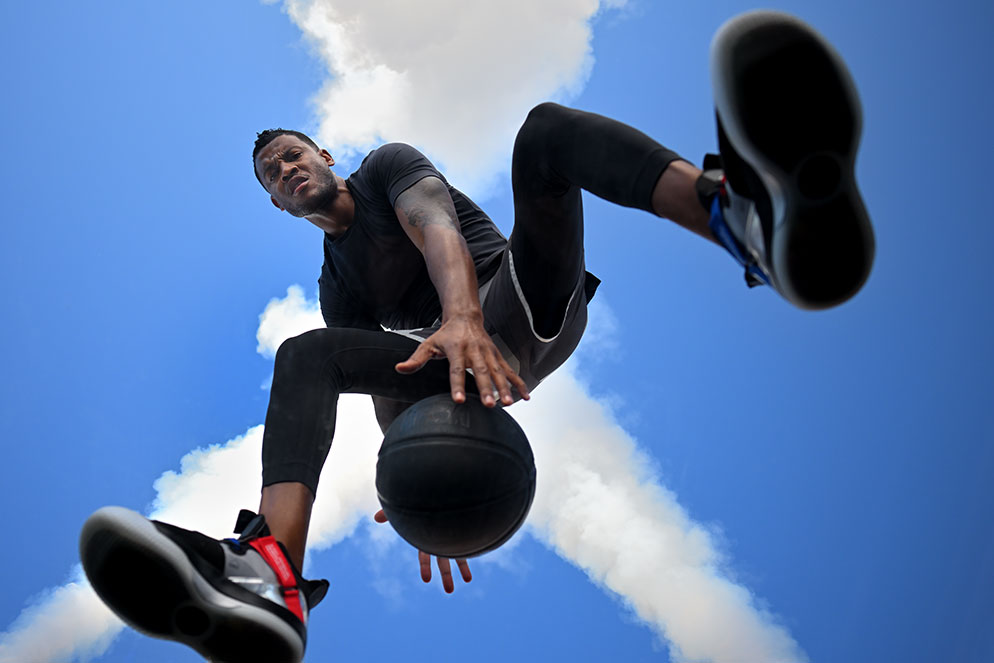Everything You Need to Know About the Amazing Z 9
“Here we’re letting the haze die down a bit, and he’s dribbling around, and I asked him to go for one, thinking he’d wait it out, but he went really quickly and it was like, ‘Okay, cool, and I just raise the camera and get the shot.’” Z 9, NIKKOR Z 24-70mm f/2.8 S, 1/1250 second, f/2.8, ISO 800, manual exposure, Matrix metering.
We’ve all heard the saying “The best camera is the one you have with you.”
Sports photographer and Nikon Ambassador Andrew Hancock turns it around: The camera he has with him is the best camera; that’s why it’s with him.
The camera is the Z 9, and Andy says it’s “absolutely the best camera I’ve ever held in my hands.” Then he adds, “I ordered six of them.” (Right, six. If you’re not familiar with Andy’s work, he does a fair amount of remote-camera shooting.)
So what makes the Z 9 the best he’s ever worked with? That question can be answered by three photographs.
“In motion, coming out of a full silhouette, 50mm f/1.2 wide open—if the AF system is going to miss, it’s going to be off big time,” Andy says. “And it just stuck it. Not only that, this is an image where you start to see just how rich the dynamic range of the camera is.” Z 9, NIKKOR Z 50mm f/1.2 S, 1/1000 second, f/1.2, ISO 100, manual exposure, Matrix metering.
1. Levels of Difficulty. The first photo is the one Andy calls “the dribble with all the haze.” He’d scouted the location and knew what the light was going to do, and with the basic idea for the photo in mind, decided to add some smoke-machine atmosphere and drama. “It’s a pretty frame, and one I like a lot,” he says of the result, “but what most people aren’t going to know is that from a technology standpoint, it blew me away because it was shot with the 50mm f/1.2 Z lens, wide open, so the margin of error is very slim, and he’s in motion, so you have various levels of difficulty. He started off back at the windows, in full silhouette, with 3D focus tracking locked on his face. I had a mark on the floor, and I’d told him, ‘I want you to dribble up, and when you hit that mark you can go left, you can go right, I don’t care, and you don’t have to tell me. I just want you to give me an abrupt change of direction.’ So he comes up and the camera stays focused on his face, but as soon as he comes closer, to where the fill light is, it goes to his eye, and when he suddenly changes direction it follows him and keeps the focus. Pretty amazing.”
Remote shots like this are set up beforehand—f/stop, shutter speed, ISO. Andy triggers the camera remotely from anywhere he happens to be on the court, capturing the action as it comes through the zone of focus. Z 9, NIKKOR Z 14-24mm f/2.8 S, 1/1000 second, f/3.5, ISO 2000, manual exposure, Matrix metering.
2. Remote Possibilities. The overhead remote shot with the two players is a pre-focus situation. “I set the camera for wide-area AF small, with face detection. I didn’t leave the focus box in the middle of the frame, because if I did, it’s naturally going to focus on the rim, but with wide-area AF small, the box was small enough that I could place it just above the rim. I started remote shooting out of frame, and as the ball handler dribbled into the frame, the focus immediately locked onto his face—and I saw that because for this shoot I had a live view feeding to a recorder. Then, as he got closer, the focus locks right onto his eye and even with the hand in front of his face, it’s still on his eye, and I’m like, I’ve never seen that before!”
Glare in the water, dark goggles and no view of the LCD? “Next-level technology” Andy says, “and a wow moment for me.” Z 9, NIKKOR Z 70-200mm f/2.8 VR S, 1/16,000 second, f/2.8, ISO 800, manual exposure, Matrix metering.
3. Point and Shoot. For a series of underwater images, Andy put the Z 9 and the 70-200mm f/2.8 Z lens in a housing he normally uses for his Z 6 or Z 7, which presented a problem. “The LCD screen didn’t line up with the housing port,” he says, “so I wouldn’t be able to view the screen. But my whole thing was, Keep the camera safe in a watertight case, and I’ll find some way to work with it in the water.” On location, though, there were other problems: the pool was in bright sunlight, which made for glare and distortion in the water, and the goggles Andy brought made things even worse. “When I was packing, I grabbed the wrong pair from the pool box: not my daughter’s, which were clear, but mine, which were tinted. So between not having the port line up with the LCD, and it being super bright under there, and me being in dark, tinted goggles, I was essentially going to be shooting blind. So I set the camera for auto-area AF with face detection and just pointed it in the direction of the swimmer and tried to keep the horizon level. And the Z 9 just nailed it. That was astonishing—I could not see and was still able to make pictures by letting the camera do its thing.”
Combine shutter speeds up to 1/32,000 second with the ability to do 20, 30 or 120 fps—for a sports photographer, that’s just phenomenal.
Single point AF on her face at 120 frames per second caught the intensity of effort. “It’s tricky,” Andy says. “You’ve got quick seconds of head above water, head below water, above, below, and the camera was not only able to acquire faster than anything I’ve shot with before, but when her head was under water I just kept focused on that area and when she came up, the focus was right there. That’s incredible.” Z 9, AF-S NIKKOR 400mm f/2.8E FL ED VR, Mount Adapter FTZ II, 1/8000 second, f/5.6, ISO 800, manual exposure, Matrix metering.
The Rest of the Story
Andy’s confidence in the camera’s capabilities extends beyond the images it will produce. “It’s going to allow me to consider doing things in ways I haven’t done before,” he says. “This camera is going to be a monumental move forward for me: AF at a D6-level or higher. Instantaneous reaction, no delay, no lag, just pull it up to your eye and go to work. The electronic shutter—no blackout. Shutter speeds up to 1/32,000 second—that means the ball on the bat, the ball coming off the bat. That speed is huge for pretty much anything in sports. Combine that with the ability to do 20, 30 or 120 fps—for a sports photographer, that’s just phenomenal.”
Then, because of the role of today’s sports shooter, he adds communication and connectivity to the list. “There’s the ease of getting photos from the camera to my phone, or to an ftp site—simply, the ease and speed of getting images from capture to client. It’ll allowed me to do that in a faster and more efficient way.”
Andy tends to push a camera as far as he can, but he says that with the Z 9 “it’s a situation where a camera can challenge me to operate in different ways, and it will open up new layers of thought and creativity. This camera becomes truly an extension of your eye, practically an extension of your perception.”
So what’s in your camera bag?
Behind the Scenes - For the critical judgment of both photographer and athlete, the Z 9 is thumbs up, all the way. “I played back some of the images of the swimmer that I shot at 120 frames per second,” Andy says. “She picked up immediately on what was possible, and she recognized that the camera was capturing what she was capable of.”

